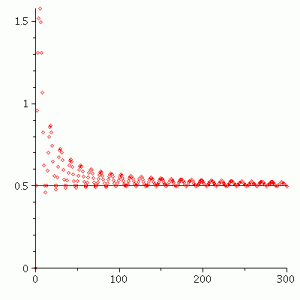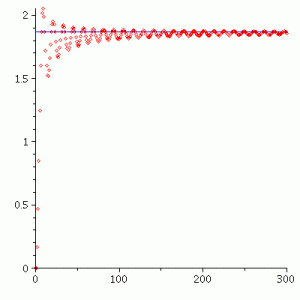In the movie Contact (which is based on the novel with the same title by Carl Sagan), Ellie Arroway (played by Jodie Foster) was speaking to a group of children: “I’ll tell you one thing about the universe, though. The universe is a pretty big place. It’s bigger than anything anyone has ever dreamed of before. So if it’s just us… seems like an awful waste of space. Right?” For us scientists, perhaps I should say most of us, it is almost like faith that there should be an intelligent life other than us somewhere out there in the universe. In 1961, an astronomer Frank Drake proposed the Drake equation (which is not really a mathematical equation but a probabilistic argument) $$N=R_\ast\cdot f_p\cdot n_e\cdot f_\ell\cdot f_i\cdot f_c\cdot L,$$ where
- $N$ is the number of active, communicative extraterrestrial civilizations.
- $R_\ast$ is the average rate of star formation in our galaxy.
- $f_p$ is the fraction of formed stars that have planets.
- $n_e$ is the average number of planets per star that has planets.
- $f_\ell$ is the fraction of those planets that actually develop life.
- $f_i$ is the fraction of planets bearing life on which intelligent, civilized life has developed.
- $f_c$ is the fraction of these civilizations that have developed communications, i.e., technologies that release detectable signs into space.
- $L$ is the length of time over which such civilizations release detectable signals.
The original estimate for $N$ given by Frank Drake in 1961 is somewhere between 1000 and 100,000,000 civilizations in the Milky Way galaxy alone. (See here for more details on Drake’s educated guesses on the above quantities 1-8.) I remember back in the 80’s the Drake equation was a great talking point for astronomers to argue why we should support SETI (Search for Extraterrestrial Intelligence).
But then here comes a piece of discouraging news, via RT, “a new study has shown that Earth truly is one of a kind with nothing coming close to life on this planet. Astronomers in Sweden used computer simulations to model the known universe from existing data and then applied to the laws of physics to advance the model 13.8 billion years. Out of the 700 quintillion potential planets, none resembled Earth, meaning we may be very alone after all.” Click here for full story and also here for a related story. Full results of the research can be seen here. Another piece of discouraging news, also via RT, says astronomers examined 93 nearby galaxies for signs of advanced alien life such as the production of waste heat, but found none. Those were the most promising galaxies as they were emitting the largest amounts of heat or mid-infrared emission. Disappointingly the emissions from the majority of observed galaxies could be explained by astrophysical processes, such as dust being generated and heated by a massive star formation. Click here for full story. The Netherlands-based team led by the National Institute for Radio Astronomy (ASTRON) used advanced telescopes to identify the sources of the excessive radiation in hopes of determining if they exhibited signs of advanced alien civilization life. Click here to read ASTRON’s press release.
These new findings tell us that after all the Earth is a very special place in the universe contrary to Copernican principle. To me personally it is still inconceivable that we human beings on the Earth are the only intelligent life in the universe. If it were true, I would probably feel really lonely and sad though there are some bright sides. We would never have to worry about alien invasions and for us the whole universe is up for grabs. Perhaps then it is our sole and sacred duty to go out, explore, colonize, cultivate, and populate the universe for the sake of our own survival and of the preservation of human civilization.
Update: A related article here which is about a paper on the arXiv titled “Dissolving the Fermi Paradox.” In the paper the authors attempt to resolve the Fermi Paradox by examining highly uncertain parameters of the Drake equation.
Update: Ethan Siegel has his taken on the arXiv paper “Dissolving the Fermi Paradox” here.
 Follow MathPhys
Follow MathPhys


